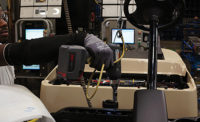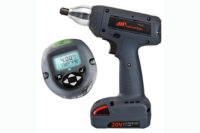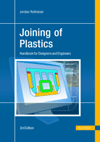Based in Mistelgau, Germany, Hermos Schaltanlagen GmbH assembles switchgear, control cabinets and power distribution equipment.
The company produces electrical equipment for parent company Hermos AG, a manufacturer of building automation and management systems as well as information technology systems for the manufacturing and process industries. Hermos Schaltanlagen—the latter word is German for “switchgear”—also produces equipment for external customers, including highly automated assembly plants.
“Orders range from a production batch of one to batches of up to several thousand units,” says Armin Birner, process optimization engineer at Hermos Schaltanlagen, which employs some 180 people in its assembly department.
Producing switchgear and other electrical equipment requires a variety of processes, including metal cutting, forming and welding; finishing; wire and cable processing; labeling; and electrical testing. Many of these processes are automated. Assembly, however, is typically done manually, since a high level of flexibility is required.
Some of the company’s products can contain hundreds of screws. And, unlike some products, in which the goal is to install screws as tightly as possible, screws for switchgear require a little more finesse.
“The big difference compared to other industries is that we don’t create a purely mechanical connection between components, but rather an electrical connection between the component and the conductor,” Birner explains. “It’s not just about whether the screw holds or not. Smooth clamping points and smooth surfaces predominate. The contact pressure must be sufficient in the long run, and the contact resistance must not too high.”
Some components are very large but require almost no torque. “If, for example, clamps are tightened too firmly, the clamping point is weakened in the long run. The terminal or conductor will be damaged,” says Birner.
On the other hand, if the electrical connection is too loose because it has not been tightened enough, it either does not work or, in the worst case, poses a fire risk if the contact resistance becomes too high.
To meet this challenge, Hermos Schaltanlagen relies on the Elit line of cordless screwdrivers from Desoutter Industrial Tools.
“With the Elit ergonomic cordless screwdrivers, our employees can tighten sensitive connections to the exact torque specified by the customer,” says Birner. “The quality of the screw connections has increased since we have been using Elit screwdrivers.”
Electric vs. Pneumatic
Every fastener in an electrical system must be tightened to a precise torque. However, torques as low as 0.5 newton-meter are difficult to apply consistently with a manual screwdriver, says Birner. As a result, Hermos relies on torque-controlled, cordless electric screwdrivers.
“We tested various models from different manufacturers and then decided on screwdrivers from Desoutter,” says Birner.
The first Desoutter tools that Hermos purchased, back in 1995, were pneumatic screwdrivers, and the company still uses them today.
“When the workpieces are horizontal, they can be conveniently assembled using pneumatic inline screwdrivers,” says Volker Breit, safety officer at Hermos Schaltanlagen. “However, during the final wiring phase for a control cabinet, the assembly is in a vertical position. Managing the screw contacts neatly is not an easy task with inline screwdrivers.”
Hermos tried pneumatic screwdrivers with offset air inlets, but there’s still the air hose to deal with. “The operation is relatively exhausting, and I have to use greater force to put the bit on and hold it in the correct position,” says Birner. “The driver speed may be too high; the bit grip is not optimal; and in the worst case scenario, you slip and wreck components. And, the hose is always in the way.”
Cordless Tools Improve Ergonomics
Hermos first used Desoutter’s Elit cordless screwdrivers a few years ago. Quiet and ergonomic, the pistol-grip tools have now become an integral part of the company’s assembly process. “Without a bothersome air hose, the tool is more ergonomic,” says Ronny Messinger, a manufacturing engineer at Hermos. “The release button is easier to operate. I can lock the torque setting and have the option of reducing the speed. It’s a completely different way of working.”
For optimal access to each fastening location, the tool’s lithium-ion battery pack can be located in two positions. The torque can be set exactly according to the specifications of the component manufacturer.
Each switchgear assembly station is usually equipped with at least three Elit screwdrivers. These have different torque settings to cover as many clamping points as possible.
“This means we can operate around 80 to 90 percent of the required values,” says Breit.
Workwear
Manufacturers usually specify a tolerance range. Some components have to be tightened to a torque value of 1 to 1.5 newton-meters. Others must be tightened to 0.8 to 1.2 newton-meters.
“In such a case, we set a screwdriver to 1 newton-meter, for example, to comply with both manufacturer’s specifications,” explains Breit.
Appropriately adjusted screwdrivers are added for special cases. “The tools are marked with colored rings, and the preset torque printed is on them,” says Breit. “This almost eliminates confusion completely.”
Two-thirds of all wire connections are fastened using Elit tools. Sixty of the cordless drivers are now in use at Hermos Schaltanlagen, and this trend is on the increase.
“If we invest in tools, they are only Elit screwdrivers,” says Birner.
Some 190 pneumatic screwdrivers are also still regularly used for assembly on horizontal components. In a few cases, they are also used for connections that require higher torques, such as load-break switches, or connections with larger cross sections. Torques over 6 newton-meters are also assembled by hand with a torque wrench. This amounts to approximately 10 percent of joints.
“We usually use Desoutter’s ELB and ELS pistol-grip screwdrivers that range from 0.4 to 6 newton-meters,” says Breit. “This covers about two thirds of all connections.”
With a daily output of 10,000 to 15,000 clamping points, almost every cordless screwdriver is in constant use. To ensure error-free processes, the entire production is structured to that control cabinets and systems are divided into work groups.
“The same teams are always responsible for the same customer or the same style and are therefore trained in certain work processes,” explains Birner.
Adjustable Speeds
The tools are regularly readjusted for the upcoming tasks and handed over to the teams together with the project. “Elit screwdrivers can be adapted as flexibly as the respective project requires,” says Birner.
Twelve of the screwdrivers are ELB models and have a fixed speed. In the ELS models, the speed can also be flexibly adjusted using a corresponding module. “We process torques over 2.2 newton-meters with 900 rpm, and over 3 newton-meters with 650 rpm. For all lower torques, the speed usually remains at 1,150 or 1,500 rpm,” says Breit.
The screwdriver offers the option of a solution approach for each individual screw joint. “When a project goes into series production, there are tests and evaluations to find the optimal tool parameters,” says Birner.
The quality of the screw connections has improved noticeably since Hermos started working with the Elit screwdrivers. There are hardly any complaints, and there has even been some positive feedback.
“When working with compressed air screwdrivers, it can happen that the bit does not grip 100 percent due to the immediate start. That almost never happens with cordless screwdrivers,” says Birner.
The ELS screwdrivers also provide an optical signal—a green light—to tell the assembler when the torque has been reached.
As a standard operating procedure, all the company’s tools are checked annually.
“At the start, we tested the screwdrivers every six months,” reports Messinger. “But since the error rate and deviations was always zero, this interval was extended.”
Maintenance and repairs are also kept to a minimum, as the screwdrivers are robust thanks to the brushless motor and wear-free start button.
Trust, But Verify
Depending on the customer’s requirements, connection points are checked either randomly or 100 percent using a torque gauge. The serial number of the screwdriver with which the connections were tightened is also recorded. “With the annual inspection of the screwdrivers, we have evidence that the tools were OK at the time of use,” says Messinger.
A higher degree of automation in production and documentation is feasible for Hermos, and management is considering additional investments in fastening equipment to meet increasing demand from some customer groups.
“We don’t want to make production more complicated than we need it to be,” emphasizes Birner. “But, if we have projects in the future that make the implementation of Industry 4.0 technology in our production processes seem appropriate, we are always ready to do so. And we are happy to take this step with Desoutter.”















